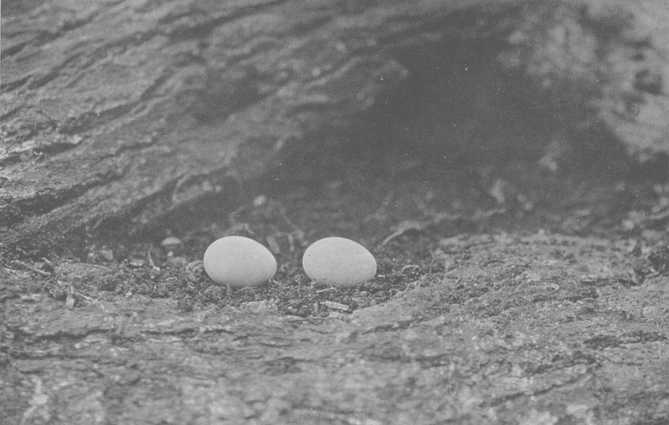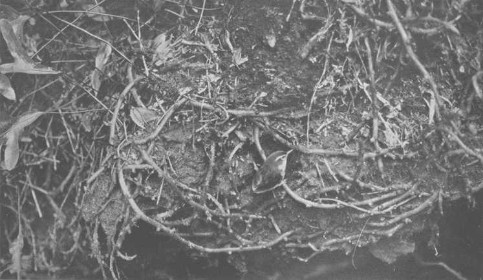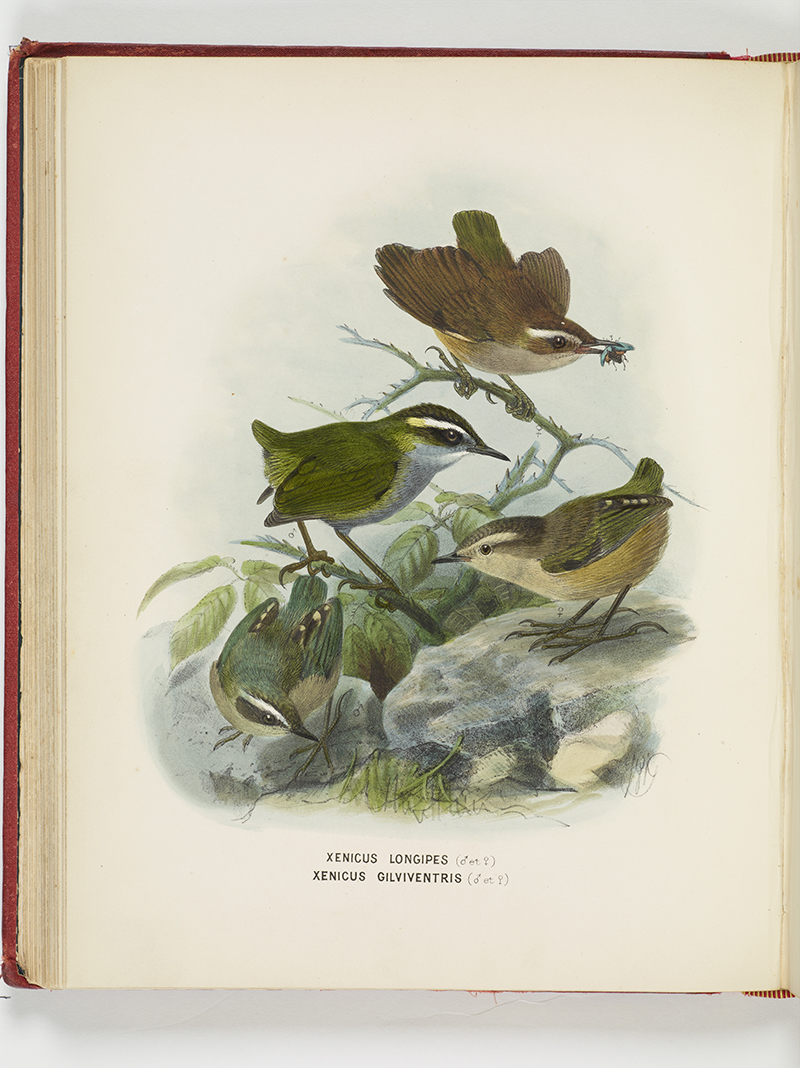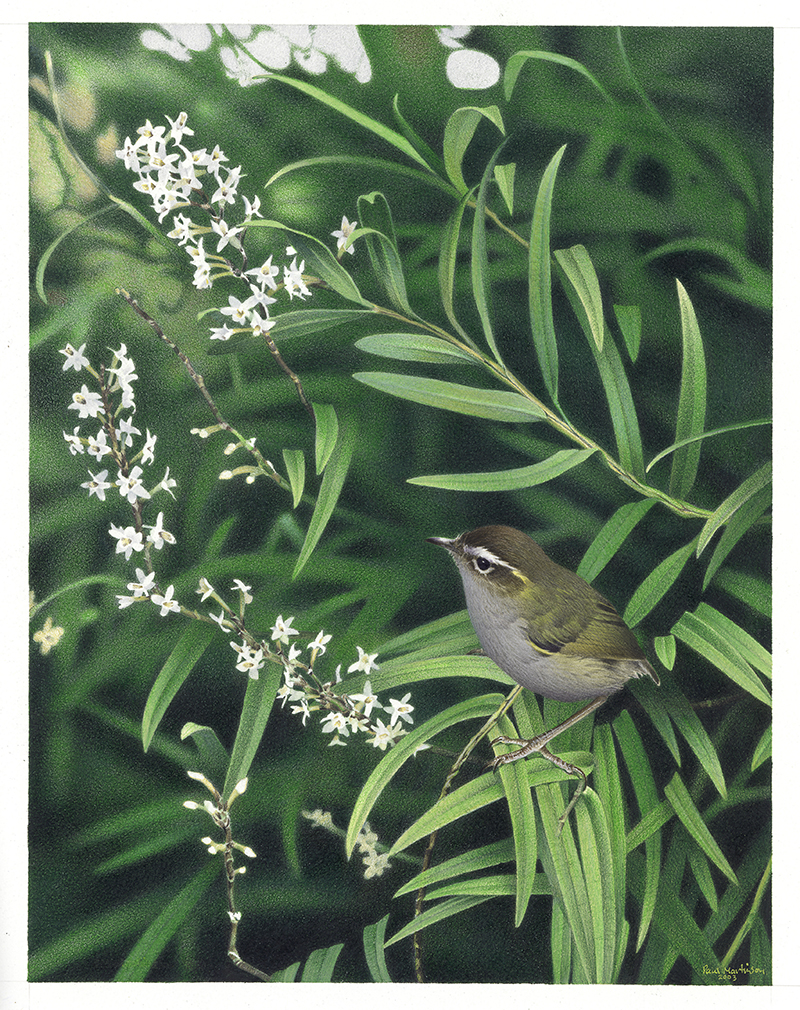Xenicus longipes longipes J. F. Gmelin, 1789:979
South Island bush wren, Bush wren, Mātuhituhi (Māori)
Taxonomy & Nomenclature
A complete synonymy taken from (Checklist Committee (OSNZ), 2022:201):
Motacilla longipes Gmelin, 1789: Syst. Nat., 13th edition 1(2): 979. Based on the “Long-legged Warbler” of Latham 1783, Gen. Synop. Birds 2: 465 – “Nova Seelandia”, restricted to Dusky Sound, Fiordland (fide Oliver 1955, New Zealand Birds, 2nd edition: 453).; Sylvia longipes (Gmelin); Latham 1790, Index Ornith. 2: 529.; Acanthisitta longipes (Gmelin); G.R. Gray 1841, List Gen. Birds (2nd edition) Appendix: 6.; Motacilla longipes J.R. Forster, 1844: in M.H.C. Lichtenstein, Descrip. Animalium: 88 – South Island. Junior primary homonym of Motacilla longipes Gmelin, 1789.; Xenicus longipes (Gmelin); G.R. Gray 1862, Ibis 4: 218.; Zenicus longipes (Gmelin); Travers 1883, Trans. Proc. N.Z. Inst. 15: 186. Unjustified emendation.; Xenicus longipes longipes (Gmelin); Mathews & Iredale 1913, Ibis 1 (10th series): 434.
Conservation Status
Extinct (WCMC, 1992:212)
Last record: 1972 (WCMC, 1992:212; BirdLife International, 2012; Kittelberger et al., 2024)
IUCN RedList status: Extinct
Distribution
South Island, New Zealand
Biology & Ecology
Hypodigm
[url=http://nlbif.eti.uva.nl/naturalis/detail.php?lang=uk&id=1]RMNH 110.000[/url] (male)
Media

Above: eggs of the South Island bush wren. Published in Guthrie-Smith (1925). Source: Wikimedia Commons.

Above: photo from 1911. Published in Guthrie-Smith (1925). Source: Wikimedia Commons.

Above: Xenicus longipes (Male and Female) and Xenicus gilviventris (Male and Female). Plate 13. From the book A history of the birds of New Zealand., 1873, by Johannes Keulemans. Te Papa (RB001176/013a)
https://www.youtube.com/watch?v=jrcx7VjfbS8

Above: Bush Wren / Matuhi. Xenicus longipes. From the series: Extinct Birds of New Zealand., 2003, Masterton, by Paul Martinson. Purchased 2006. © Te Papa. CC BY-NC-ND 4.0. Te Papa (2006-0010-1/4)
References
Original scientific description:
Gmelin, J. F. (1789). Aves Anseres. Tome I. Pars II. In: Gmelin J.F. (Ed.) Caroli a Linnaei Systema Naturae per Regna Tria Naturae. 1(2): 501-1032.
Other references:
Anonymous. (1964). List of rare birds, including those thought to be so but of which detailed information is still lacking. IUCN Bulletin 10(Special Supplement): 4 pp.
BirdLife International. (2012). Xenicus longipes. In: IUCN 2013. IUCN Red List of Threatened Species. Version 2013.1. (http://www.iucnredlist.org). Downloaded on 31 August 2013.
BirdLife International. 2016. Xenicus longipes. The IUCN Red List of Threatened Species 2016: e.T22698580A93690852. https://dx.doi.org/10.2305/IUCN.UK.2016-3.RLTS.T22698580A93690852.en. Accessed on 02 July 2022.
Brooks, T. 2000. Extinct species. In: BirdLife International (ed.), Threatened Birds of the World, pp. 701-708. Lynx Edicions and BirdLife International, Barcelona and Cambridge, U.K.
Buller, Walter L. (1905). Supplement to a history of the birds of New Zealand. London: Self published.
Checklist Committee (OSNZ). (2010). Checklist of the Birds of New Zealand, Norfolk and Macquarie Islands, and the Ross Dependency, Antarctica (4th ed.). Ornithological Society of New Zealand & Te Papa Press, Wellington. [p. 277, 358]
Checklist Committee (OSNZ). (2022). Checklist of the Birds of New Zealand (5th edition). Ornithological Society of New Zealand Occasional Publication No. 1. Wellington: Ornithological Society of New Zealand. [p. 201]
Collar, N. J.; Crosby, M. J.; Stattersfield, A. J. 1994. Birds to watch 2: the world list of threatened birds. BirdLife International, Cambridge, U.K.
Cresswell, R. A. (1968). Sighting of South Island Bush Wren. Notornis 15(2): 125.
Dunckley, J.V. & Todd, C.M. 1949. Birds west of the Waiau River. New Zealand Bird Notes 3: 163–164.
Greenway, J.C. 1967. Extinct and vanishing birds of the world. Dover Publications, New York.
Guthrie-Smith, Herbert. (1925). Bird Life on Island and Shore. Edinburgh: William Blackwood & Sons.
Higgins P.J., Peter J.M. & Steele W.K., eds., 2001: Handbook of Australian, New Zealand and Antarctic Birds. Volume 5: Tyrant-flycatchers to Chats. – Melbourne: Oxford University Press, 1269 pp.
Holdaway, Richard N., Worthy, Trevor H. and Tennyson, Alan J. D. (2001). A working list of breeding bird species of the New Zealand region at first human contact. New Zealand Journal of Zoology 28: 119-187.
Holmes, Branden. (2021). What's Lost and What Remains: The Sixth Extinction in 100 Accounts (eBook). Self published.
del Hoyo, J., Collar, N.J., Christie, D.A., Elliott, A., Fishpool, L.D.C., Boesman, P. and Kirwan, G.M. 2016. HBW and BirdLife International Illustrated Checklist of the Birds of the World. Volume 2: Passerines. Lynx Edicions and BirdLife International, Barcelona, Spain and Cambridge, UK.
Hume, Julian Pender and Walters, Michael. (2012). Extinct birds. London: T & AD Poyser. 544 pp.
Kittelberger, Kyle D., Tanner, Colby J., Buxton, Amy N., Prewett, Amira and Şekercioğlu, Çağan Hakkı. (2024). Correlates of avian extinction timing around the world since 1500 CE. Avian Research 15: 100213. https://doi.org/10.1016/j.avrs.2024.100213 [Supplementary data (List of 216 taxa)]
Knox, Alan G. and Walters, Michael P. (1994). Extinct and endangered birds in the collections of The Natural History Museum. British Ornithologists' Club Occasional Publications 1: 1-292. [p. 188]
Mitchell, K. J., Wood, J. R., Llamas, B., McLenachan, P. A., Kardailsky, O., Paul Scofield, R., Worthy, Trevor H. and Cooper, A. (2016). Ancient mitochondrial genomes clarify the evolutionary history of New Zealand’s enigmatic acanthisittid wrens. Molecular Phylogenetics and Evolution 102: 295-304.
Mlíkovský, Jiří. (2012). Extinct and nearly extinct birds in the collections of the National Museum, Prague, Czech Republic. Journal of the National Museum (Prague), Natural History Series 181(9): 95-123. [automatic download]
Robertson, C. J. R. 1985. Complete book of New Zealand birds. Reader's Digest, Sydney.
Robertson, H. A., Baird, K. A., Elliott, G. P., Hitchmough, R. A., McArthur, N. J., Makan, T. D., Miskelly, Colin M., O’Donnell, C. F. J., Sagar, P. M., Scofield, R. P., Taylor, G. A. and Michel, P. (2021). Conservation status of birds in Aotearoa New Zealand, 2021. New Zealand Threat Classification Series 36. Department of Conservation, Wellington. 43 pp.
Hugh Robertson, John Dowding, Graeme Elliott, Rod Hitchmough, Colin Miskelly, Colin O’Donnell, Ralph Powlesland, Paul Sagar, Paul Scofield, Graeme Taylor. (2013). Conservation status of New Zealand birds, 2012. New Zealand Threat Classification Series 4. 22 pp.
Sayol, Ferran, Steinbauer, Manuel J., Blackburn, Tim M., Antonelli, Alexandre and Faurby, Søren. (2020). Anthropogenic extinctions conceal widespread evolution of flightlessness in birds. Science Advances 6(49): eabb6095. https://doi.org/10.1126/sciadv.abb6095 [Supplementary Material (Data File S1)]
Scott, Peter (ed.). (1965). Preliminary List of Rare Mammals and Birds, pp. 155-237. In: The Launching of a New Ark. First Report of the President and Trustees of the World Wildlife Fund. An International Foundation for saving the world's wildlife and wild places 1961-1964. London: Collins.
Tennyson, Alan J. D. and Martinson, Paul. (2006). Extinct Birds of New Zealand. Wellington: Te Papa Press.
Turbott, E.G. 1990. Checklist of the Birds of New Zealand. Ornithological Society of New Zealand, Wellington.
Tyrberg, Tommy. (2009). Holocene avian extinctions, pp. 63-106. In: Turvey, Samuel T. (ed.). Holocene Extinctions. Oxford, UK & New York, USA: Oxford University Press. xii + 352 pp.
WCMC (World Conservation Monitoring Centre). (1992). Global Biodiversity: Status of the Earth's living resources. London: Chapman & Hall. xx + 594 pp.
Williams, G. R. (1962). Extinction and the land and freshwater-inhabiting birds of New Zealand. Notornis 10(1): 15-32. [p. 19, 21]
Williams, G. R.; Given, D. R. 1981. The Red Data Book of New Zealand. Nature Conservation Council, Wellington.
Williams, H.W. 1957. A dictionary of the Maori language. Sixth edition. Wellington: R.E. Owen, Government Printer. xxvi + 504 pp.
Worthy, Trevor H. (1993). Fossils of Honeycomb Hill. Museum of New Zealand, Te Papa Tongarewa, Wellington. 56 pp.
Worthy, T. H. and Holdaway, R. N. (1994). Quaternary fossil faunas from caves in Takaka Valley and on Takaka Hill, northwest Nelson, South Island, New Zealand. Journal of The Royal Society of New Zealand 24(3): 297-391. [Xenicus sp. from South Island, so may refer to this taxon or X. gilviventris]
Worthy, Trevor H. and Holdaway, Richard N. (2002). The Lost World of the Moa: Prehistoric Life of New Zealand. Bloomington, Indiana: Indiana University Press. xxxiii + 718 pp.
